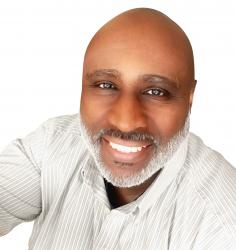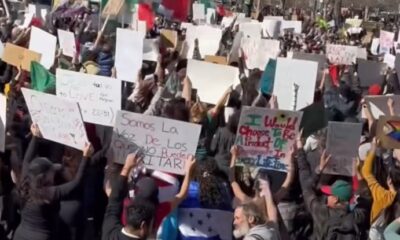HBCU
Historically Black Colleges and Universities Celebrate Enrollment While Eyeing the Future

Attending Howard University was a foregone conclusion for Rodney Edge, Jr. long before he arrived on the historically black university’s campus. With alumni aunt and uncle extolling the school’s virtues, Edge, now 20 years old and a junior majoring in electrical engineering, was instantly sold on Howard even before he entered high school.
As a teenager growing up in Atlanta, awareness of race matters and social justice played barely any role in Edge’s college selection. Then, Florida vigilante George Zimmerman shot and killed 17-year-old Trayvon Martin one night. That moment and the unrest that ensued added new relevance to Edge’s desire to attend a black university.
“When the Trayvon Martin situation happened and then the Mike Brown situation happened, it was like Trayvon Martin for me was like one of the things that nudged me to wake up because it had me realize there’s still some racial tension – some relatively significant racial tensions going on,” Edge recalls.
Historically Black Colleges and Universities are experiencing renewed interest, and recent enrollment figures have surged at several well-known HBCUs. The spike coincides with increased racial tensions nationwide and growing social consciousness among college-age students. Meanwhile, serious concerns remain at enough historically black schools to curtail prematurely celebrating that news, which reverses a downward trend in HBCU enrollment. A vast number of these institutions faces viability questions amid on-going concerns over troubled finances, graduation rates and the alarming amount of turnover among college presidents.
Few would debate the persistent popularity of HBCU’s. With generations of alumni dispersed across the nation and elsewhere, historically black schools remain a preferred option among college-seeking high school seniors, transfer students and post-graduates. If relevance were based solely on the recent uptick in new enrollees, the question would be asked and answered.
A glance at freshman enrollment over the past couple years is enough to leave university administrators hopeful. According to the crowd-sourced Journal of Blacks in Higher Education, Alcorn State University’s first-year class is its largest in school history. The Mississippi University reports a 38 percent increase over a year ago. In the same time period, first-year enrollment at Virginia State University has jumped 10 percent. Meanwhile, Voorhees College, Claflin University and Kentucky State University all are reporting gains as well.
Previously, The Washington Post published an article showing freshman year gains of, “49 percent at Shaw University, 39 percent at South Carolina State, 32 percent at Tuskegee University … 22 percent at Dillard University, 22 percent at Central State University, 20 percent at Florida Memorial University, and 19 percent at Delaware State University.”
Walter M. Kimbrough, president of Dillard University, a historically black college in New Orleans, explains the uptick in that same article. President Kimbrough says it’s the result of something he calls the Missouri Effect, stemming from the 2015 unrest at the University of Missouri. He identifies that as the tipping point for African American students at predominantly white institutions (PWI) to stand up for greater attention to their needs.
In an NPR interview, Kimbrough shares how black students naturally would turn to historically black schools after feeling ignored or mistreated at PWIs.
“As you look at a lot of the demands, people are asking for more black faculty, more black staff, black living spaces, black-centered curriculum. Well, HBCUs have provided these things for almost 200 years. And, so I think people are now asking a question to say, what’s important to me? And if those things are important, they’re looking to say, well, an HBCU offers that, and why don’t I just go to the place that has those things,” Kimbrough offers.
With well-documented stories of racial incidents at predominantly white institutions and as talk of so-called safe-spaces emerges, students increasingly recognize HBCUs as the original safe space.
“They do provide a nurturing environment, smaller class sizes, number three on my list would be the interactions that are provided students to have with faculty and staff,” says Johnnie B. Watson, President Emeritus at LeMoyne-Owen College in Memphis.
Arkisha Edge expected that her son, Rodney, the Howard University junior, would experience a similar sense of community and shared values as those she recalls from her days attending North Carolina Agricultural and Technical State University.
She remembers that “A & T provided a sense of family or a sense of belonging, a sense of helping you to establish your identity and being sure of who you are, a feeling of self-worth and pride in your heritage – the things you have to offer to society – and not taking a back seat to anyone else. I felt like those were all qualities and attributes that would have furthered Rodney in his quest to [become] an engineer.”
That ability to connect with students and empower them in a personalized setting long has been and remains one of HBCU’s greatest selling points. Dr. Christina R. Kirk’s journey to becoming an attorney, judge and teacher began at historically black Fisk University in 1996.
“If you’re looking for a family environment, if you’re looking for a place that’s going to nurture you and that is going to allow you to grow and develop into who you will eventually become, then you definitely want to at least explore your HBCU options,” Dr. Kirk raves.
The nurturing environment HBCUs promote may explain the results of a 2015 Gallup Poll that finds alumni of historically black schools more likely to thrive compared with blacks who graduated from other schools. The study reveals HBCU grads thriving at higher percentages than their counterparts who attended PWIs in the areas of finance, personal purpose, social and community endeavors as well as their overall physical well-being. At a rate of 55 to 29 percent, HBCU graduates report feeling their college experience better prepared them for life after graduation than black graduates of other institutions.
Tenika Booth, of Fayetteville, Georgia, says her daughter, Jordyn Booth, has blossomed in her Spelman College experience. Booth, 37, credits the trademark, HBCU personalized approach for setting her senior on the pathway to success.
“Somebody took her under their wing and she just flourished. And I think that’s the difference between going to an HBCU and a PWI: You’re kind of just a number. And over there, people know her – they know that’s Jordyn. And I don’t think you can get that anywhere else other than an HBCU,” Booth exclaims.
But, even Watson, a college president, will tell you all the low teacher-to-pupil ratios in the world are worthless unless these institutions remain financially viable. When he became LeMoyne-Owen’s president in 2006, the school was on probation for financial instability. He’s credited with fixing LeMoyne-Owen’s accreditation problem by marshaling the school’s alumni and connecting with the Memphis business community. He admits, though, historically black universities, with their relatively smaller endowments, routinely risk financial peril.
For that reason, Watson worries about the federal government’s commitment to funding HBCUs at a manageable rate.
“Any decreasing of the grant money that historically black colleges are able to get from the federal government could simply mean their destruction more than anything else. That’s an area we must keep our eyes on,” Watson warns.
These days nothing is certain about funding for HBCUs or money for students. Restructuring of PLUS Loans previously strained students’ ability to access funds. No immediately clear answers come with the changing of the guard in Washington.
“Oftentimes when a Republican would come into office, it was believed that there would be separatist funds coming your way – meaning that I don’t want you at my white schools, or I’m going to give you money to stay at your own schools – two pennies on the dollar of course – but I’m going to give you a little bit of money, enough that you’ll salivate over it and stay where you are, or I’m going to give you guilt money,” says Dr. Sherice Janaye Nelson, an adjunct professor and lecturer who has degrees from three HBCUs.
Whatever funding guarantees may have existed have ghosted with a new administration and many more question marks remain in. The question of relevance becomes an existential one then, one which may require a paradigm shift among the challenged HBCU community.
One radically different and increasingly more likely scenario may involve paring down the actual number of HBCUs.
Dr. Nelson suggests, “The solution to this is, to me, putting our effort into making the government fund us at particular levels and then consolidating some of the schools. It’s unreasonable to ask the government to fund a hundred schools. So the solution is: How do we consciously and structurally shut down some of these HBCUs and then have an intended purpose for their campuses?”
Academicians are slow to part with tradition, and such ideas as consolidation are bound to meet with some resistance. The reality of circumstance ultimately may force the issue and shape the new look of the modern HBCU.
In the meantime, Dr. Kirk continues to share the advantages of an HBCU education with mentees in the Prep University program, designed to introduce high school students to the nation’s HBCUs.
“I take girls on HBCU tours,” says Kirk, “because the HBCU experience for me was such an impactful one, that I want to share that experience with continuing generations. There was so much I learned about myself in that environment that I felt girls still need to have that experience. I make sure they at least get a chance to explore HBCUs as an option when they’re looking at options.”

-
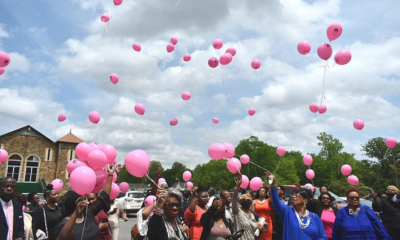
 Featured10 months ago
Featured10 months agoCalifornia Is the First State to Create A Public Alert for Missing Black Youth
-
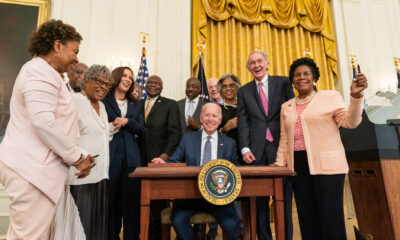
 Featured9 months ago
Featured9 months agoAfrican American Leaders Stay the Course Amid Calls for President Biden To Bow Out of Race
-

 Featured10 months ago
Featured10 months agoThe Debate Fallout Lands on Both Candidates
-

 Featured9 months ago
Featured9 months agoPresident Joe Biden Decides to Withdraw from the Presidential Race
-

 Featured9 months ago
Featured9 months agoIn One of His Final Speeches as President, Biden Says It’s Time for ‘Fresh Voices’
-
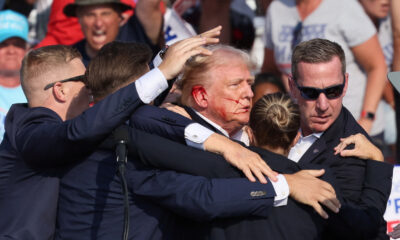
 Featured9 months ago
Featured9 months agoPresident Joe Biden Describes Shooting of Donald Trump As ‘Sick’

